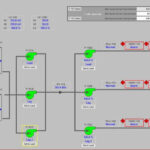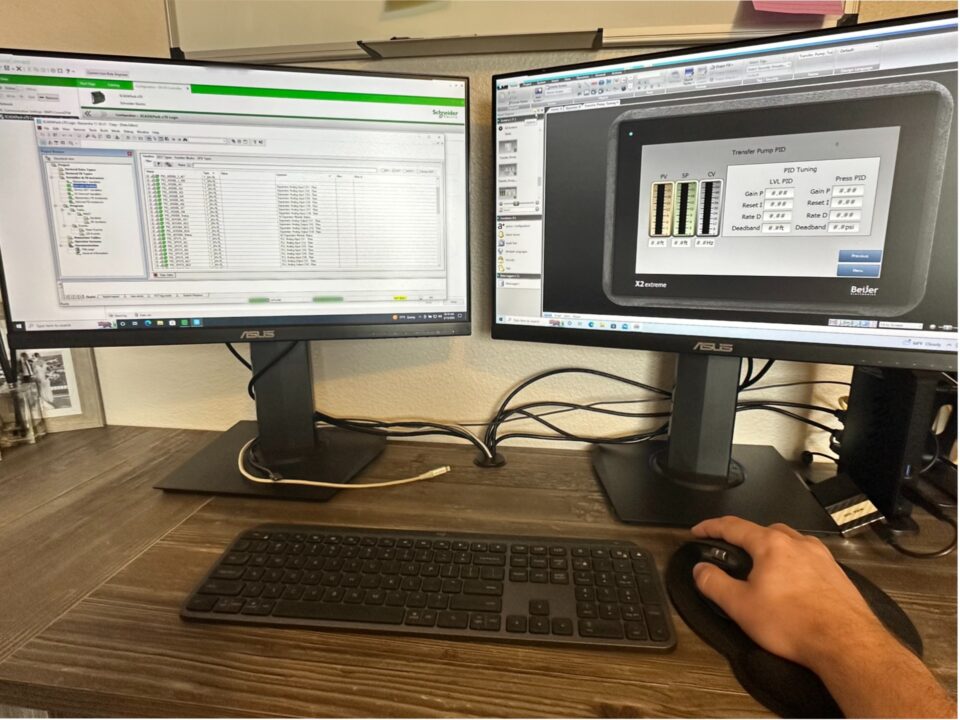
Obsolete HMI Hardware, Software, And SCADA Systems Migrations
July 21, 2021
Vent Testing And Inventorying Your Pneumatic Devices
August 18, 2021Natural Gas is made up mostly of methane, which has been identified as having a 25X greater greenhouse gas effect on the environment than that of C02. For this reason, regulatory bodies and governments are changing regulations for upstream Oil & Gas producers to minimize venting of methane into the atmosphere.
The routine venting of methane happens at many different sources at an upstream Oil & Gas site and include compressor seals, tank farms, glycol dehydrators and pneumatic devices or controllers. At Crossroad Energy Solutions, our instrumentation technicians work closely with pneumatic devices. As a result, the focus of this article will be on pneumatic devices and the regulations/options facing producers on routine venting.
Routine venting from pneumatic devices & controllers should not be confused with “fugitive emissions”, which are unwanted methane leaks at any point along a pipeline or control system. Fugitive emissions are also a major contributor to methane venting to the atmosphere but is not the focus of this article.
Using methane as a “fuel gas” to actuate pneumatic devices, control valves, and pressure regulators is still one of the most popular control methods used in the Oil & Gas industry, especially in remote locations where electricity isn’t readily available. These pneumatic devices are designed to use the mechanical energy available within pressurized methane to physically actuate the device then vent the gas to the atmosphere once actuated.
With advancements in technology, pneumatic devices & controllers have become far more efficient. The previous generation of devices & controllers are known as “high-bleed” and vent significantly more methane to atmosphere than modern devices known as “low-bleed”. However, these older devices & controllers are very reliable and tend to keep chugging along for decades. It is for this reason that many high-bleed devices & controllers are still in operation. These instruments are considered “low-hanging-fruit” in the eyes of governing bodies trying to reduce methane emissions.
Some may have heard of the changes made to Directive 60, Section 8, issued by the Alberta Energy Regulator a few years ago. Reducing methane emissions has become a big target and the directive achieved preliminary federal (Canada) equivalency in March 2020.
Pneumatic Instrument Changes
Source: AER’s Directive 60, Section 8.6.1
The requirements in this section apply to gas-driven pneumatic devices, including pneumatic instruments (e.g., controllers, switches, transducers, and positioners) and pneumatic pumps.
1. The duty holder must prevent or control vent gas from pneumatic instruments installed on or after January 1, 2022. Alberta Energy Regulator 76 Directive 060: Upstream Petroleum Industry Flaring, Incinerating, and Venting (April 2021)
2. The duty holder must ensure that pneumatic pumps installed on or after January 1, 2022, that operate more than 750 hours per calendar year do not emit vent gas.
3. Effective January 1, 2023, for level controllers that emit vent gas and are installed before January 1, 2022, the duty holder must
a. prevent or control vent gas, or
b. evaluate the actuation frequency during normal operating conditions and for level controllers that actuate between 0 and 15 minutes, use a relay that has been designed to reduce or minimize transient or dynamic venting or adjust the actuation frequency to ensure that the time between actuations is greater than 15 minutes.
4. Effective January 1, 2023, for pneumatic instruments other than level controllers that emit vent gas and are installed before January 1, 2022, the duty holder must
a. prevent or control vent gas, or
b. ensure that the instruments have a manufacturer-specified steady-state vent gas rate of less than 0.17 m³ /hr
Crossroad Energy Solutions Can Help Ensure Your Compliance
At Crossroad Energy Solutions, we can help facilities remain compliant with these government-enforced regulations.
Our team of experts has the know-how and tools to assess your facility, take an accurate inventory of your existing equipment, and swap out any outdated devices with compliant equipment.
Don’t wait — call our team at 877-872-0222 to discuss your facility’s needs!


